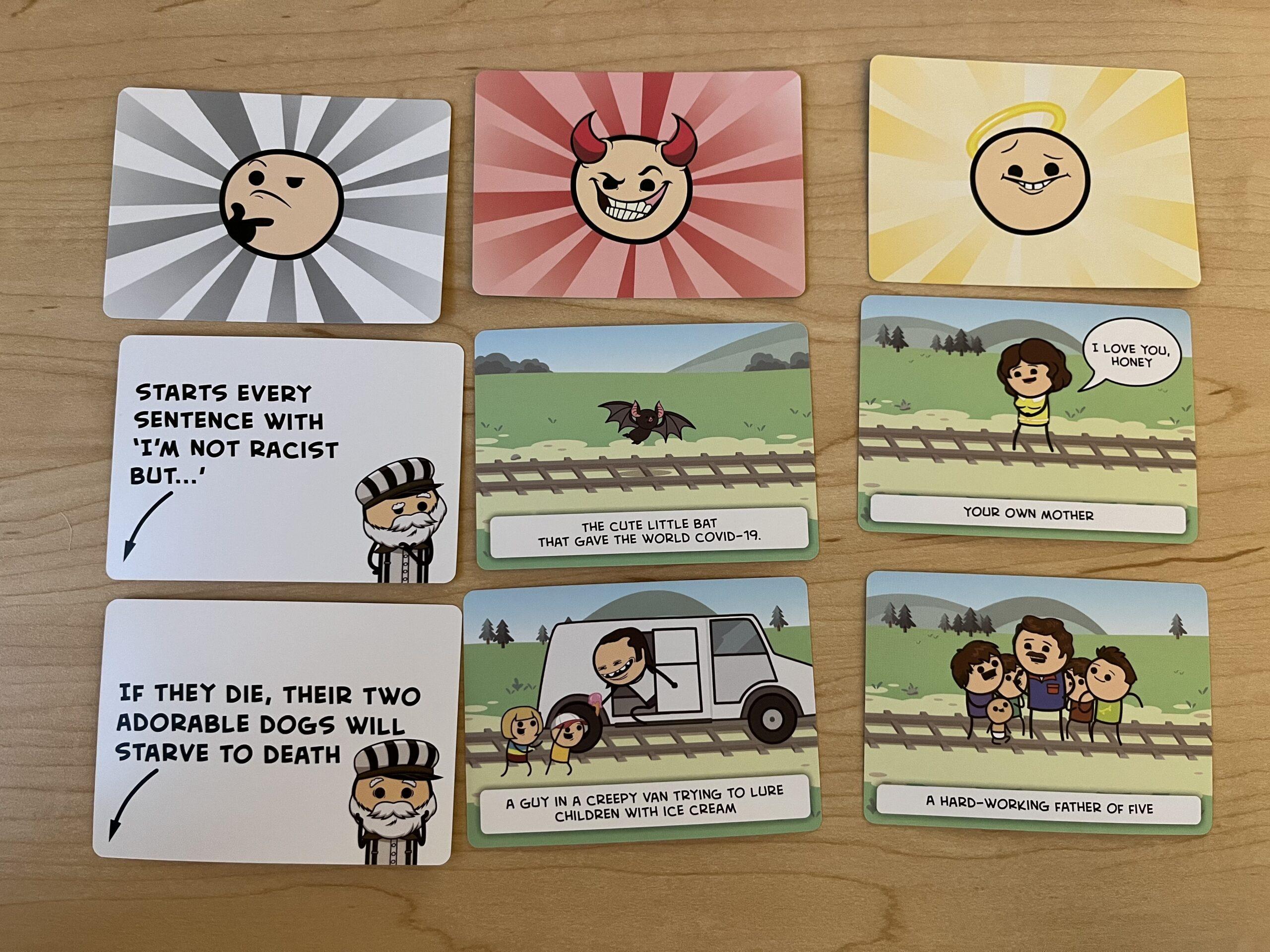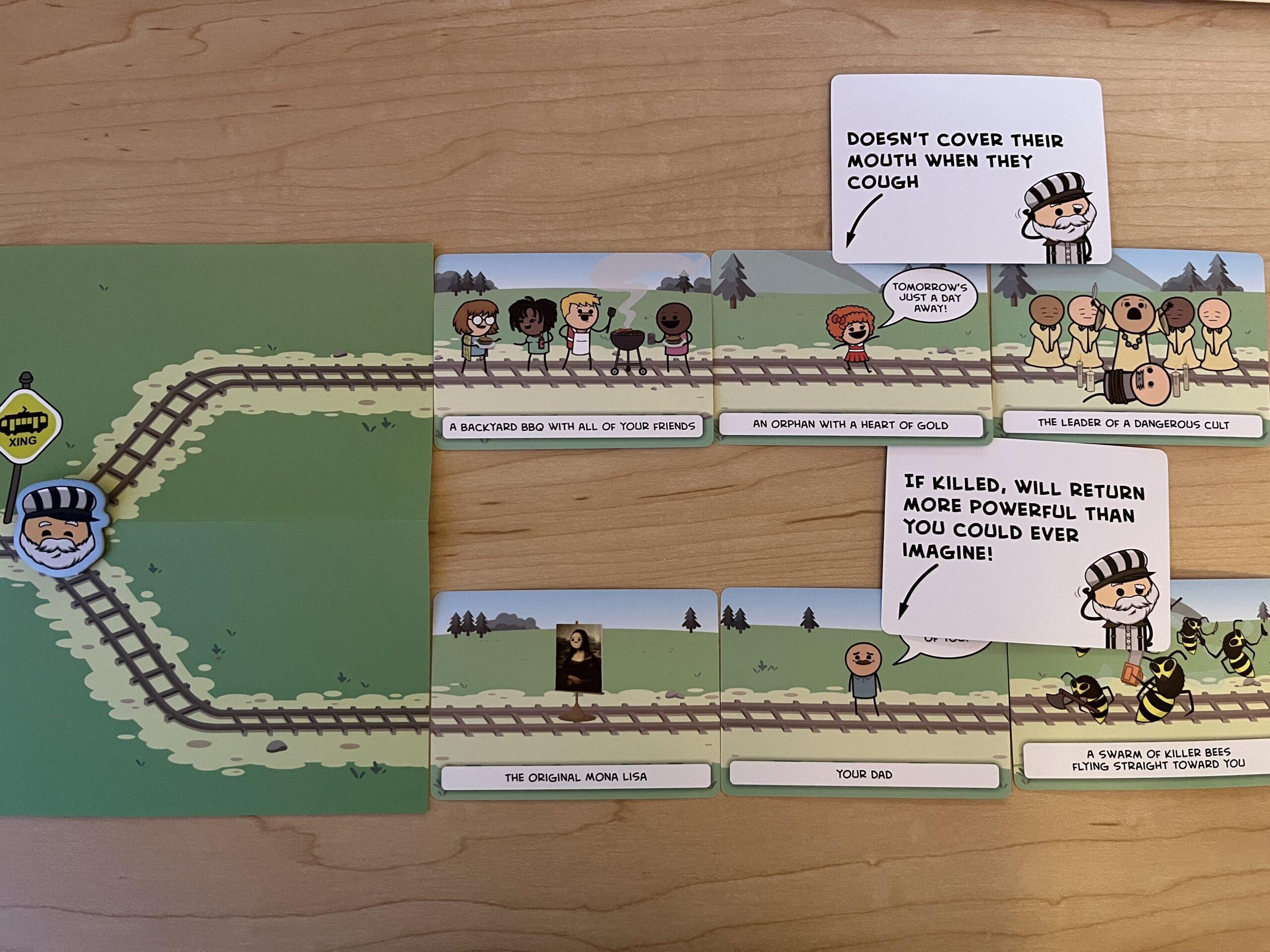The game I chose for my critical play is called “Trial by Trolley”. This party game is for people aged 14+, groups of friends, strangers, and family. It was made by Cyanide & Happiness and Skybound Tabletop. The game is played in card form.
Question: How is judging used in the game, and how does that affect group dynamics and relationships?
Thesis: Judging in this game is done by one person, the conductor of the trolley, meaning the rest of the players are split into two teams who must fight and out-argue each other in order to convince the conductor to not murder the people on their track. This creates collaboration and fellowship within each team, but conflict and tension between the teams. It also reveals insights into the values and moral perspectives of each player.
Analysis
The game begins with one player being selected as the conductor and the rest of the players being split into two teams, one for each track. Then everyone must draw innocent, guilty, and modifier cards to play on their track and on the other teams track. This mechanic adds an element of randomness, but also strategy, as you don’t know what card you are going to get but once you do you can strategize which card would be best to sabotage the other team’s track and benefit your team’s track.

I would describe this game as a fellowship type of fun because you must collaborate with your team to decide what is the best way to convince the conductor to not murder your track. You must appeal to the conductor’s morals and preferences because their position is extremely subjective, as another mechanic of this game is that no specific criteria are given to the conductor to aid them in their judging. When I was playing I quickly took the lead in my team because I was the player that knew the conductor best. My track was the one at the very bottom.

I knew that the conductor had a very close relationship to their dad, so I made sure to tell my team to leverage that fact in our argument. Additionally, we tried our best to diminish the severity of our guilty card, which was a swarm of killer beats coming straight at the conductor. We stated that a trolley wouldn’t be able to murder all the bees, so the conductor was better off killing off a dangerous cult which would affect more people. As a team, we decide to attract as little attention as possible to the innocent cards of the other team as we thought it would harm our argument if we did and we didn’t really have a good argument for them. Arguing against the other team got very heated very quickly because they also tried their best to win the debate.
I noticed that this game expands beyond the magic circle, as it relies on the existing morals and preferences of each player, as well as, their argumentative and persuasive skills. If a player is not good at arguing or they don’t know the conductor very well, they may have a less of a chance to win. However, if a player is very good at arguing and they know the conductor very well, they have a leg up in this game.
Conclusion
Overall, I think this game is pretty similar to “Cards Against Humanity” because there is one judge and it also has elements of humor and creativity. However, it is different because it has a theme of moral dilemmas and also it promotes player engagement. Each player has the ability to talk and debate, while in other similar games sometimes players don’t get that opportunity and have to wait their turn. I think this game can be improved by giving a timer for the debates as they can also drag on for a while, and perhaps (or not) restricting one team from interrupting when it is the other team’s turn to argue.
This game was very fun and clever. 10/10 recommend! ⭐️



